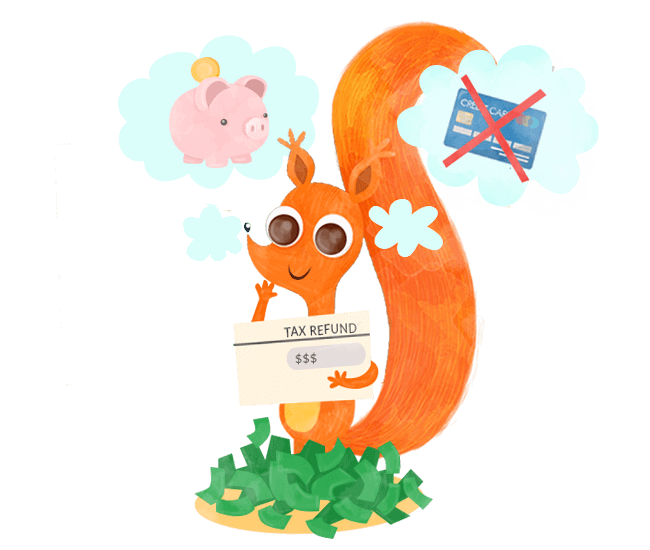
April has almost come and gone—say goodbye to tax season. If you’re one of the lucky ones, say hello to your tax refund! According to the Canadian Revenue Agency, the average Canadian received a refund of $1,580 for last year’s income tax.
It can be tempting to take that windfall and splurge. After all, the government got a one-year, interest-free loan with your money and you just got it back. But before you go booking an impromptu vacation, here are the 3 things you should do with your tax refund:
Now that you have a lump sum of cash, it’s the perfect time to take a holistic look at your finances and ask some tough questions.
Did you take out an RRSP loan that helped you get this refund? When’s the last time you did a financial plan update – or perhaps built a financial plan from scratch? Having the extra cash flow from your refund will allow you some piece of mind to take the time to review your entire financial picture and get the right advice on what to do with the money.
Once you have a plan, there will be two key things to pay attention to: reducing the amount of money you owe and growing the amount of money you have.
A windfall is the perfect time to buy yourself freedom from debt. It’s unexpected money in the sense that it doesn’t touch your regular budget or expenses, making it perfect for reducing retail and consumer debt. If you have a loan you’ve been procrastinating paying down or some lingering consumer debt on your credit card, use your tax refund to pay down that debt.
Don’t know where to start? Follow these steps:
Document all of your debts, both loan amounts and credit card balances. Create a table for each debt you have with:
If your refund is big enough to knock out one source of debt entirely, pay it off and move the monthly payment your highest interest debt left over (so the next highest interest debt has the original payment plus this additional capital, knocking it down faster. This is called debt snowballing, and you can do this until you are completely debt free).
In paying down your debt, start with higher interest debt first (or debt that you can entirely eliminate with your refund). Then move onto “revolving debts” that are easy to rack up, such as retail debt on credit cards. Using this process, you will be in a much better place to start putting money towards your future goals.
If, after writing out all of your debts, you find your tax refund is making a smaller dent in your overall debt situation than you’d like, maybe it’s time to look at options to make your debt less expensive. For example, it’s often possible to use home equity or a consolidation loan to pay off credit cards and other expensive debt so you have a lower interest rate overall.
If you have a plan to eliminate your “bad” debts, pat yourself on the back, you did the right thing by focusing on debt first. It’ll get you on the right track.
We hear you… soaking up the sun on a beachfront vacation would be ideal. But if you invest that money, compound interest over time will afford you many more sunshine retreats later in life.
If you haven’t taken the time to build a financial plan, you can build one in 3 minutes with Planswell. If you take the time now to plan and put your newfound sum of money to work, next year you won’t have this problem.
The best part of a financial plan is that it gives you monthly recommendations on exactly how much money you should be putting towards what accounts based on your situation, because the RRSP vs. TFSA debate is very real and is best solved by an extremely intelligent financial planning engine. A proper financial plan will also take into account the most efficient tax strategy to ensure you maximize your tax refund next year, and it will also tell you exactly where to re-invest that money.
Whether your goals are saving for your child’s education or building up your retirement nest egg, a financial plan is where it starts.
YOUR FREE FINANCIAL PLAN
The best financial plan is also the easiest.
Build your free plan today.
Start now